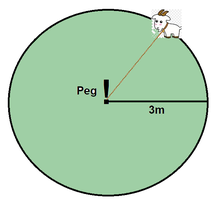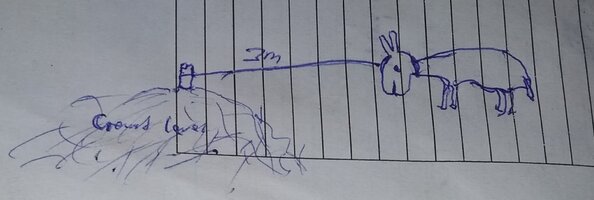A goat is tied to a peg in the ground. The rope is 3 m long. What area of the grass can the goat eat?
How do I solve this problem? I know that if the rope is used to form a circle, the perimeter would be [math]2 \pi r = 2~m[/math] Maybe from there I can get the radius r which I am thinking I can use to find the area of the rope which is used to form a circle. But even I find such area will the area be equal to the area of grass the goat can graze? How do I go about this problem?
How do I solve this problem? I know that if the rope is used to form a circle, the perimeter would be [math]2 \pi r = 2~m[/math] Maybe from there I can get the radius r which I am thinking I can use to find the area of the rope which is used to form a circle. But even I find such area will the area be equal to the area of grass the goat can graze? How do I go about this problem?



